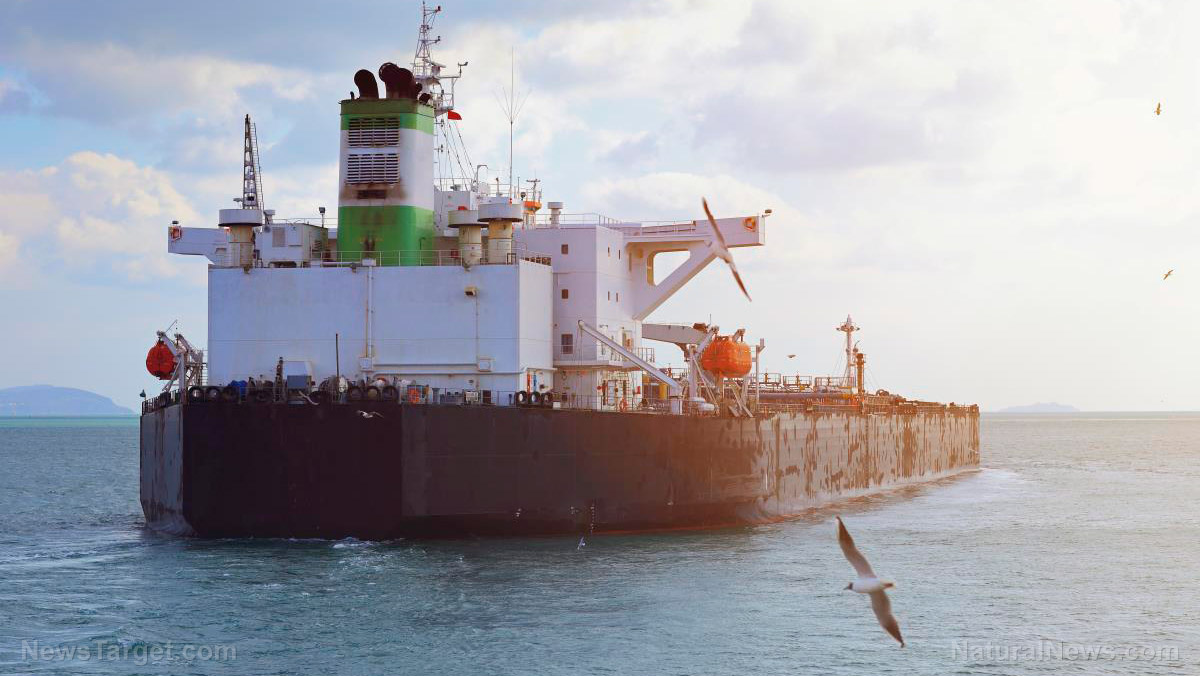by: Laura Harris

(Natural News) The vast majority of Russian oil exports had been rerouted to China and India as Moscow continues to reduce its dependence on the European Union (EU) oil trade.
In April, Russian oil exports reached their highest level in 14 months, with almost 80 percent heading to Asian markets due to Western sanctions, according to a recent report by the International Energy Agency (IEA). The report stated that Russian crude shipments increased by 50,000 barrels per day (bpd), totaling 8.3 million bpd for the month.
The EU has implemented sanctions on Russian oil exports, including a ban on seaborne crude oil exports and price caps on Russian crude oil at $60 per barrel. Further restrictions and price caps were imposed on higher-value Russian refined oil products. (Related: Save)
In response to sanctions, Russia reduced oil output by 500,000 bpd starting in March. Additionally, Moscow stopped selling oil to buyers who adhere to a Western-imposed price ceiling of $60 a barrel. As a result, Russia’s oil trade revenues increased by $1.7 billion in April, reaching $15 billion, with nearly 80 percent of crude shipments going to China and India.
“While Russian gas pipeline exports to Europe have obviously collapsed, Russian exports of both oil and coal have continued to flow at close to pre-war volumes,” said Gavin Thompson, vice chairman of energy in the Asia Pacific at Wood Mackenzie.
However, Moscow’s monthly crude export revenues in April were 27 percent lower compared to the same period last year, partly due to lower global energy prices. Russia has also been offering its crude at a reduced price, which has contributed to the decline in revenues. Nonetheless, with the growing energy demand in Asia, the discount on Russian crude has reportedly started to narrow.
The IEA anticipates that China’s emergence from Wuhan coronavirus (COVID-19) restrictions will boost global oil demand this year. “China’s demand recovery continues to surpass expectations, with the country setting an all-time record in March [at 16 million bpd],” the IEA stated.
China and India keep Russian economy afloat amid Western sanctions
Despite sanctions imposed by Western countries to punish Russia for declaring war on Ukraine, the Russian economy has managed to stay afloat, thanks to the increasing demand of China and India for Russian energy imports.
In 2022, Russia’s economy contracted by only 2.1 percent, much less severe than the previously predicted contractions of up to 12 percent. Russian Deputy Prime Minister Aleksandr Novak earlier revealed that Russia plans to reroute over 60 percent of its oil and petroleum product exports from the EU to Asia this year, with 140 million tons out of 220 million tons being rerouted.
China, which refrains from imposing sanctions on Russia, became the second-largest buyer of Russian crude oil in 2022. Imports of Russian crude oil to China increased by eight percent, equivalent to 1.72 million bpd. The imports of Russian pipeline gas and liquefied natural gas also saw substantial increases. Additionally, its imports of Russian coal surged by 20 percent.
India, which has become the largest customer of Russian oil, also saw a record increase in imports. The imports of thermal coal also experienced a significant rise. The availability of cheap imports attracts Prime Minister Narendra Modi, who has strengthened ties with the West but maintains warm relations with Russia, especially in the face of high inflation and an upcoming election year.
Apart from China and India, Turkey has become a significant buyer of Russian energy, including crude oil and coal. Analysts predict that Pakistan and Bangladesh will likely follow suit and increase their imports of Russian energy at discounted prices.
Russia has adopted tactics similar to heavily-sanctioned Iran to overcome Western sanctions, such as establishing a “shadow fleet” of old oil tankers and blending Russian fuel with other oil for re-exportation. These measures make it more challenging to trace the origin of Russian fuel.
However, the impact of the sanctions on Russia’s economy is still evident. Despite increased exports to Asia, overall oil and gas revenues fell by 50 percent in 2022. Russia had to compensate for the shortfall by selling its foreign currency reserves. Revenue is projected to continue declining as global markets adjust to the new price cap system and logistical challenges.
If the sanctions persist, two parallel global oil markets could emerge: one trading heavily discounted Russian oil and another avoiding Russian oil altogether. Russia expects its oil and gas revenues in 2023 to decrease by nearly one-quarter, necessitating the search for alternative revenue sources.
But despite the challenges, both China and India are expected to continue having strong demand for Russian energy this year.
Learn more about the oil trade and energy crisis around the world at NewEnergyReport.com.
Watch this video to learn how the EU and G7 countries still buy oil from Russia despite sanctions.